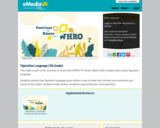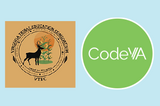
This video is part of the Continue to Know with WHRO TV series. Watch Kelly Sowden teach about figurative language.
- Subject:
- English
- Reading
- Material Type:
- Lesson
- Visual Media
- Provider:
- WHRO Education
- Author:
- WHRO Education
- Date Added:
- 10/07/2020

This video is part of the Continue to Know with WHRO TV series. Watch Kelly Sowden teach about figurative language.

Making and eating fry bread is a special event for many Native American people. People began to make fry bread because sometimes in the past they only had a few things to make meals with. This lesson leads students through the history and heritage of fry bread with the book Fry Bread– A Native American Family Story by Kevin Noble and consider the similies and metaphors within the story, and then reflect on family traditions in their own culture and household through a flowchart of pseudocode. This lesson was created through a partnership between CodeVA and the Virginia Tribal Education Consortium (VTEC).